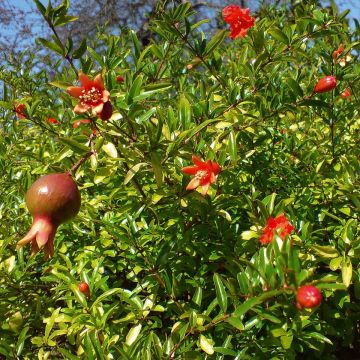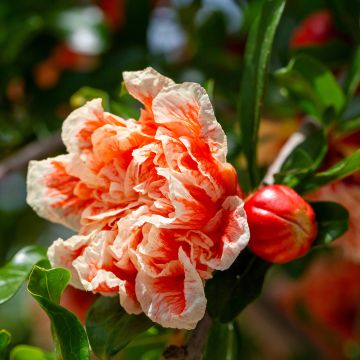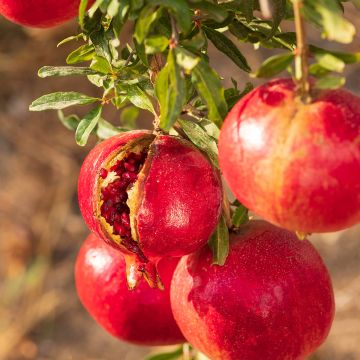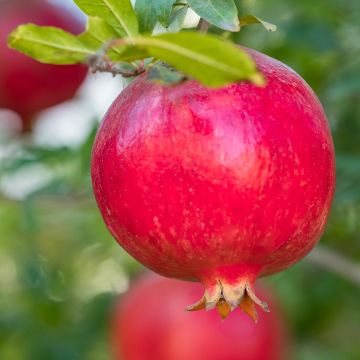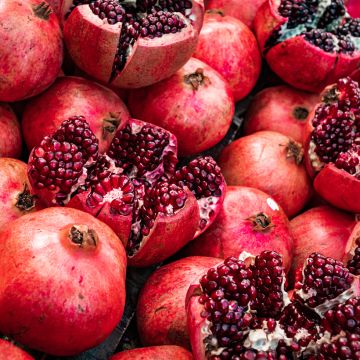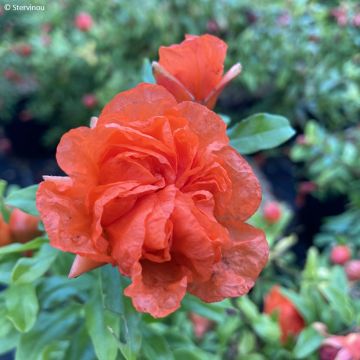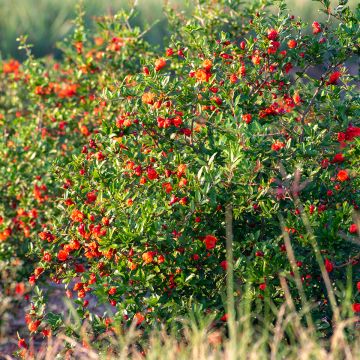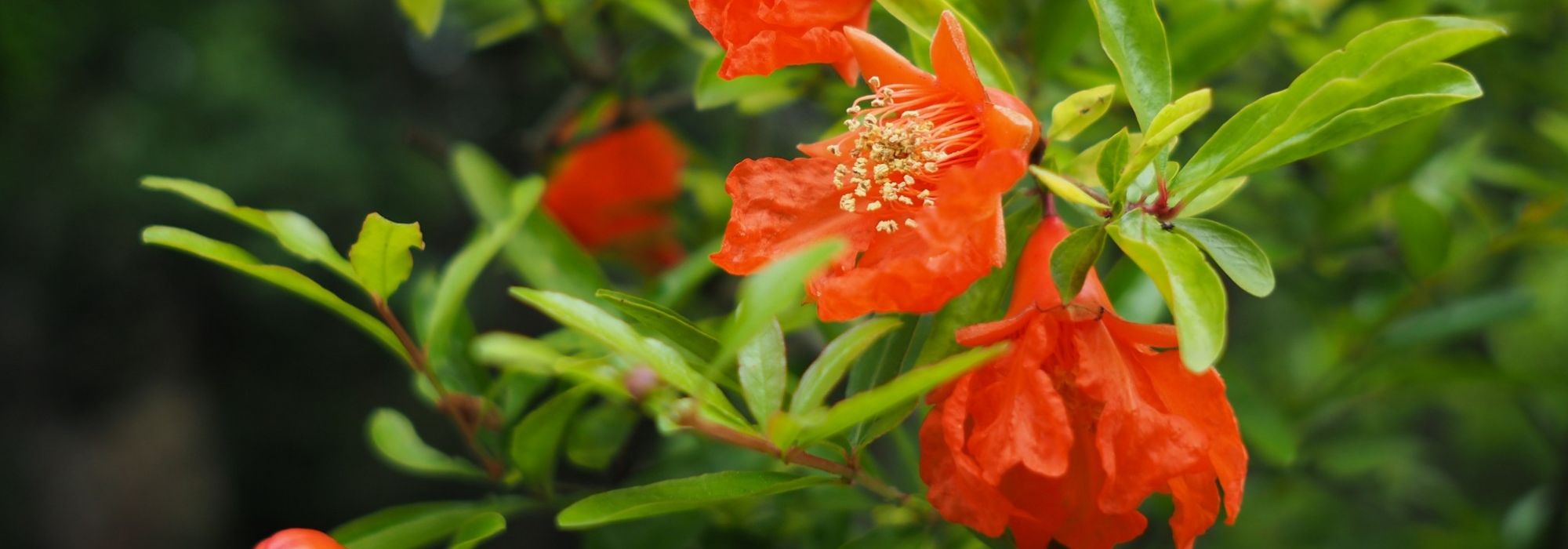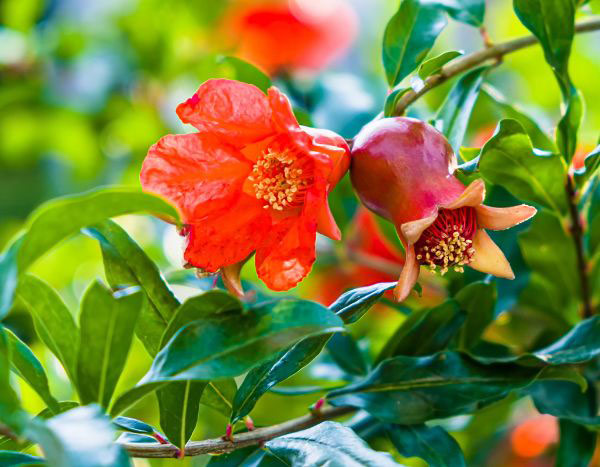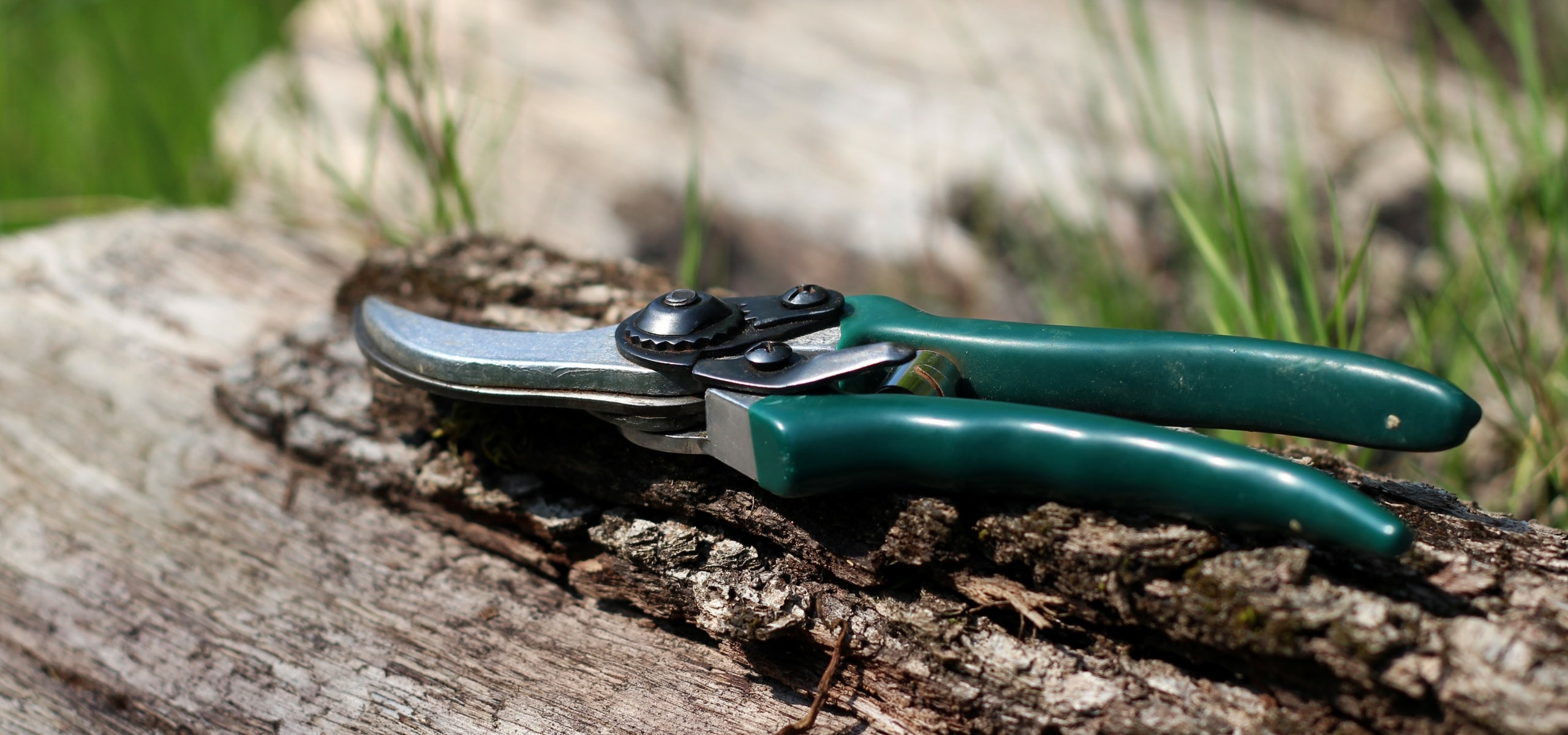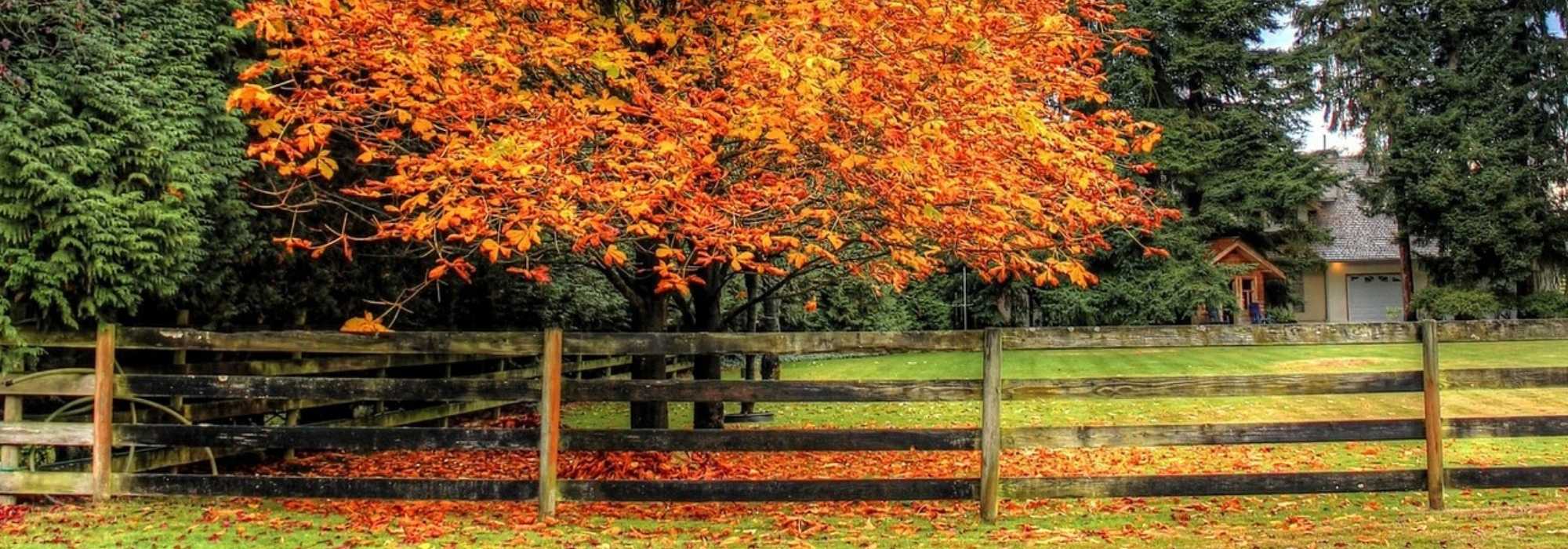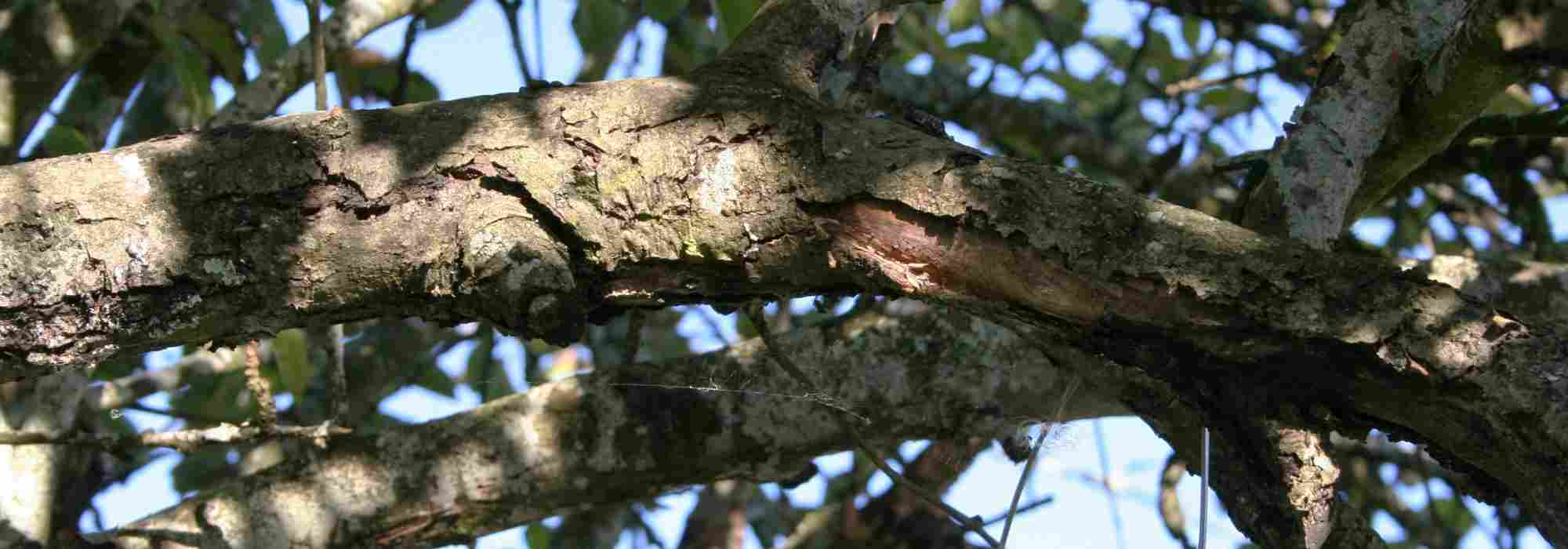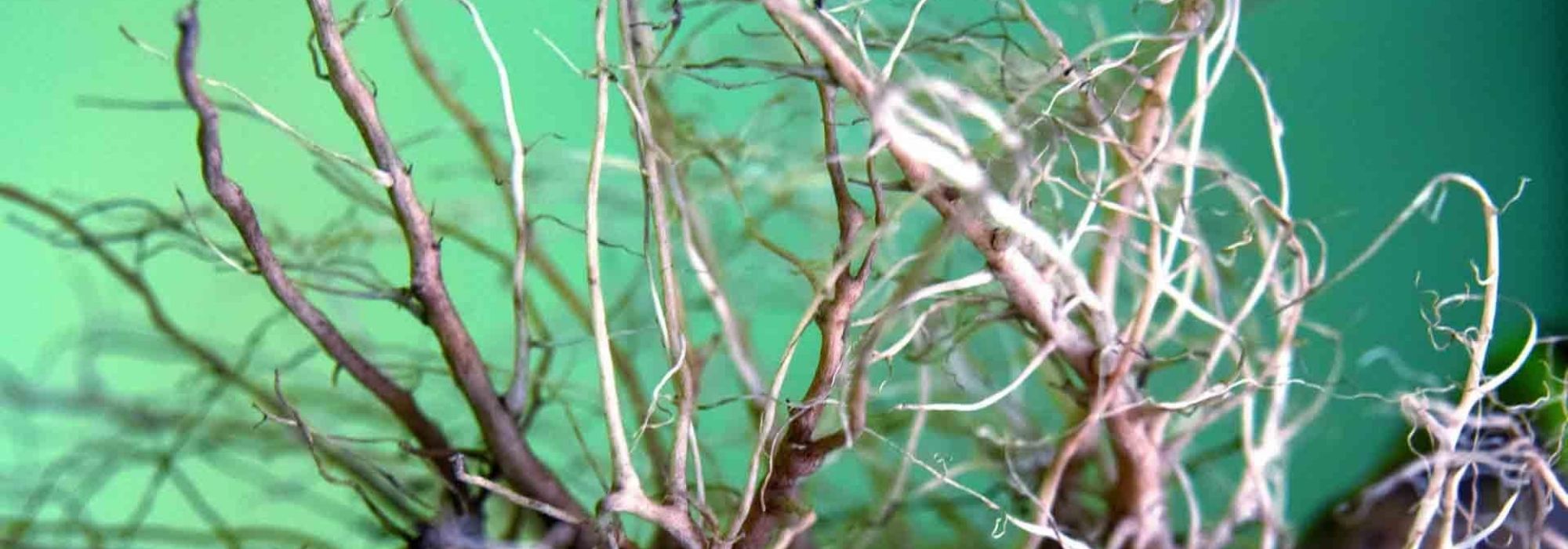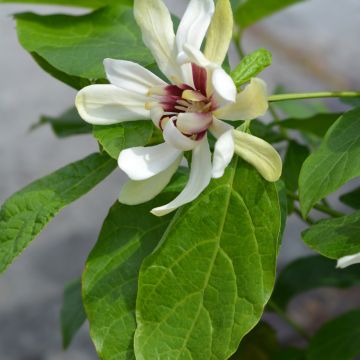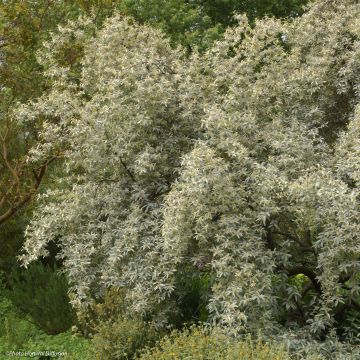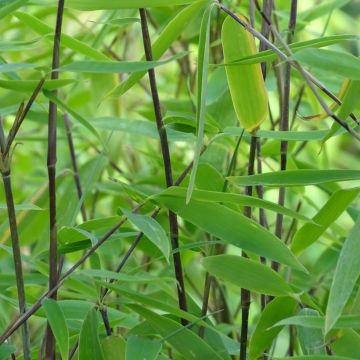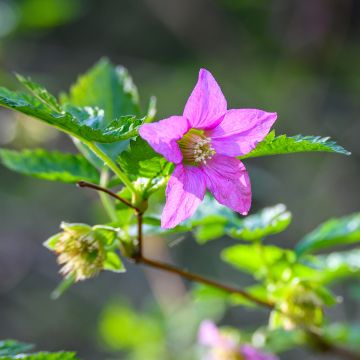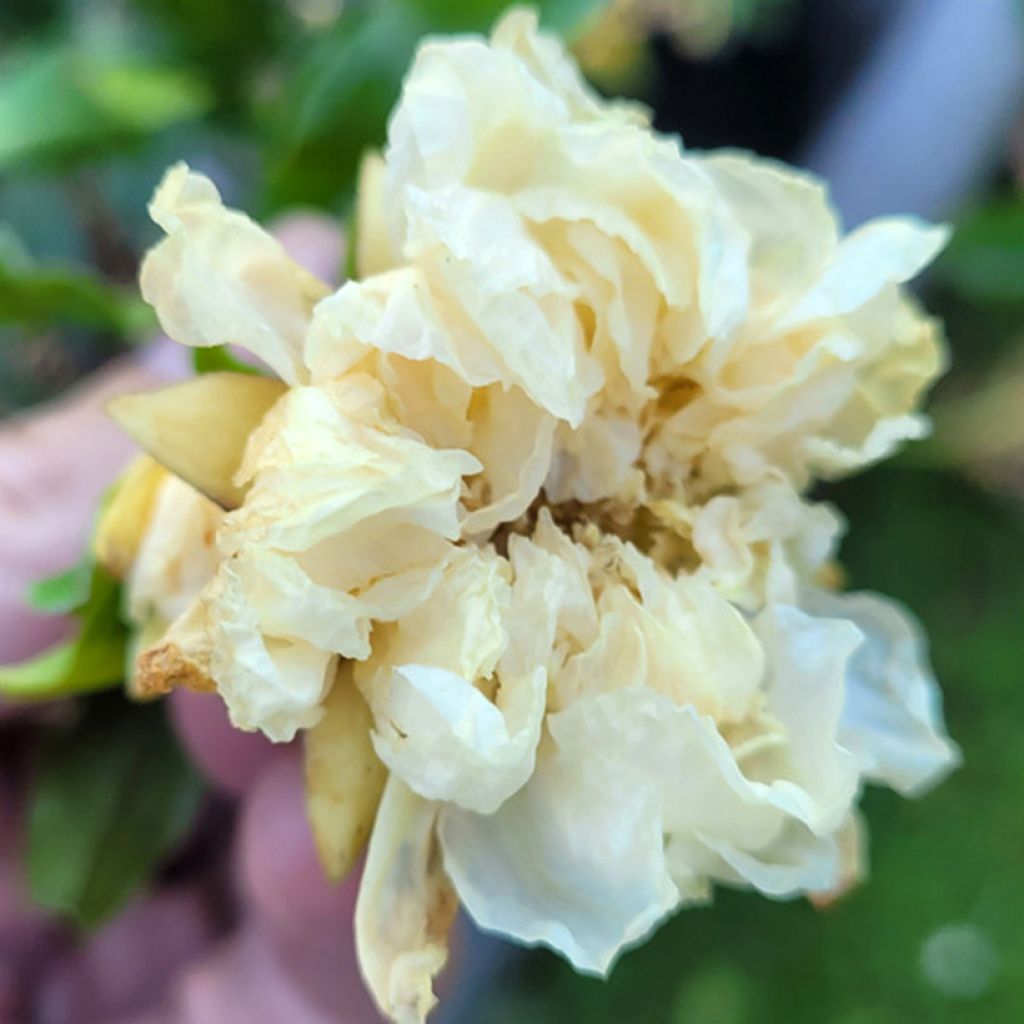

Punica granatum Alba Plena - Ornamental pomegranate
Punica granatum Alba Plena - Ornamental pomegranate
Punica granatum Alba Plena
Pomegranate
Special offer!
Receive a €20 voucher for any order over €90 (excluding delivery costs, credit notes, and plastic-free options)!
1- Add your favorite plants to your cart.
2- Once you have reached €90, confirm your order (you can even choose the delivery date!).
3- As soon as your order is shipped, you will receive an email containing your voucher code, valid for 3 months (90 days).
Your voucher is unique and can only be used once, for any order with a minimum value of €20, excluding delivery costs.
Can be combined with other current offers, non-divisible and non-refundable.
Why not try an alternative variety in stock?
View all →This plant carries a 24 months recovery warranty
More information
We guarantee the quality of our plants for a full growing cycle, and will replace at our expense any plant that fails to recover under normal climatic and planting conditions.
Does this plant fit my garden?
Set up your Plantfit profile →
Description
Punica granatum 'Alba Plena' is a rare flowering pomegranate. It is a particularly ornamental, white, double-flowered form. This deciduous shrub or small tree offers a long spring to summer flowering period that stands out beautifully against the very bright green foliage. Its flowers do not form fruit. A minor detail considering the generosity and remarkable adaptability of this variety! Protected during its first years, the young pomegranate will become a vigorous bush, resistant to summer drought and hardier than one might imagine. Ideal for a flowering hedge or a shrub border, the flowering pomegranate reveals its full charm when planted as a standalone specimen.
Punica granatum, better known as the pomegranate, is native to a vast region stretching from the Middle East to Central Asia. More precisely, its roots lie in Iran and Northern India, where it has grown for millennia. From there, it spread through trade and ancient civilisations, notably the Phoenicians, Greeks, and Romans, who introduced it to the Mediterranean. Today, it is cultivated in many warm, dry regions worldwide, for example, in Spain, Italy, California, and North Africa. This small deciduous tree belongs to the Lythraceae family.
The 'Alba Plena' form, like all double-flowered pomegranate cultivars, does not produce fruit but offers beautiful, very double flowers. It naturally forms a bush of slightly thorny, entangled shoots in its youth. Its growth is quite rapid until it reaches maturity, around 5-6 years of age. The mature pomegranate develops at a much slower rate. Ultimately, it forms a small tree approximately 3-4 m in height with a 2.5 m spread, with a slightly spreading and rounded habit, though more upright than in fruiting varieties. The mature tree stands on a gnarled trunk. Flowering occurs from June-July until August, depending on the climate. It is earlier in the south. The creamy white flowers are formed of multiple crumpled petals emerging from a thick, waxy-textured calyx. They measure 3-4 cm in diameter. The deciduous foliage is bright, glossy green. It is formed of small, ovate, elongated, thick leaves. The young leaves are coppery in colour in spring. The foliage turns golden yellow in autumn before falling.
The 'Alba Plena' pomegranate can be acclimatised in regions where frosts are not too prolonged, as this tree loves heat and sun. This plant will grow easily anywhere where the olive tree and the fig tree can thrive. Elsewhere, it should be planted in a very sheltered position, against a south-facing wall. It can be used as a standalone specimen or integrated into a hedge with the red double form 'Maxima Rubra', whether pruned regularly or not. Phillyrea - Filaria, mulberries, and strawberry trees make good companions.
The city of Granada, located in southern Spain and a crossroads of Arab and Andalusian civilisations, takes its name from the pomegranate, introduced by the Moors and widely planted in the legendary gardens of the Alhambra palace. This tree flowered in the famous Hanging Gardens of Babylon, and the Romans, having discovered it in Carthage, named it "Apple of Carthage".
Plant habit
Flowering
Foliage
Botanical data
Punica
granatum
Alba Plena
Lythraceae
Pomegranate
Punica granatum Album Flore Pleno, Punica granatum f. Albescens Flore Pleno
Mediterranean, Middle East, Central Asia
Planting and care
Plant Punica granatum 'Alba Plena' in spring, outside Mediterranean regions, when frost is no longer a concern. Preferably in autumn in hot and dry climates. Position it in a very sunny and sheltered location, or in partial shade in warm climates, in deep soil, even chalky. While it withstands summer drought well and tolerates arid conditions, it will only reach its full potential and flower abundantly in soil that remains sufficiently moist at depth. It is resistant to sea spray. Monitor watering during summer for the first two years. It will appreciate compost application and a thick layer of dead leaves, particularly during the first two winters in cold regions. Pruning in early spring is not essential, but it can help form a small single-trunked tree or one nicely supported by 3 or 4 trunks more quickly: keep the most vigorous stem(s) on a young plant, remove the others. In subsequent years, systematically remove shoots that appear on the small trunk(s), up to the desired height.
The pomegranate has no specific enemies; it is a very robust species. However, it can become infested with scale insects. It can be treated in winter (with white oil, for example), or let nature take its course: some scale insects are consumed by insectivorous birds.
Planting period
Intended location
Care
Planting & care advice
This item has not been reviewed yet - be the first to leave a review about it.
Similar products
Haven't found what you were looking for?
Hardiness is the lowest winter temperature a plant can endure without suffering serious damage or even dying. However, hardiness is affected by location (a sheltered area, such as a patio), protection (winter cover) and soil type (hardiness is improved by well-drained soil).

Photo Sharing Terms & Conditions
In order to encourage gardeners to interact and share their experiences, Promesse de fleurs offers various media enabling content to be uploaded onto its Site - in particular via the ‘Photo sharing’ module.
The User agrees to refrain from:
- Posting any content that is illegal, prejudicial, insulting, racist, inciteful to hatred, revisionist, contrary to public decency, that infringes on privacy or on the privacy rights of third parties, in particular the publicity rights of persons and goods, intellectual property rights, or the right to privacy.
- Submitting content on behalf of a third party;
- Impersonate the identity of a third party and/or publish any personal information about a third party;
In general, the User undertakes to refrain from any unethical behaviour.
All Content (in particular text, comments, files, images, photos, videos, creative works, etc.), which may be subject to property or intellectual property rights, image or other private rights, shall remain the property of the User, subject to the limited rights granted by the terms of the licence granted by Promesse de fleurs as stated below. Users are at liberty to publish or not to publish such Content on the Site, notably via the ‘Photo Sharing’ facility, and accept that this Content shall be made public and freely accessible, notably on the Internet.
Users further acknowledge, undertake to have ,and guarantee that they hold all necessary rights and permissions to publish such material on the Site, in particular with regard to the legislation in force pertaining to any privacy, property, intellectual property, image, or contractual rights, or rights of any other nature. By publishing such Content on the Site, Users acknowledge accepting full liability as publishers of the Content within the meaning of the law, and grant Promesse de fleurs, free of charge, an inclusive, worldwide licence for the said Content for the entire duration of its publication, including all reproduction, representation, up/downloading, displaying, performing, transmission, and storage rights.
Users also grant permission for their name to be linked to the Content and accept that this link may not always be made available.
By engaging in posting material, Users consent to their Content becoming automatically accessible on the Internet, in particular on other sites and/or blogs and/or web pages of the Promesse de fleurs site, including in particular social pages and the Promesse de fleurs catalogue.
Users may secure the removal of entrusted content free of charge by issuing a simple request via our contact form.
The flowering period indicated on our website applies to countries and regions located in USDA zone 8 (France, the United Kingdom, Ireland, the Netherlands, etc.)
It will vary according to where you live:
- In zones 9 to 10 (Italy, Spain, Greece, etc.), flowering will occur about 2 to 4 weeks earlier.
- In zones 6 to 7 (Germany, Poland, Slovenia, and lower mountainous regions), flowering will be delayed by 2 to 3 weeks.
- In zone 5 (Central Europe, Scandinavia), blooming will be delayed by 3 to 5 weeks.
In temperate climates, pruning of spring-flowering shrubs (forsythia, spireas, etc.) should be done just after flowering.
Pruning of summer-flowering shrubs (Indian Lilac, Perovskia, etc.) can be done in winter or spring.
In cold regions as well as with frost-sensitive plants, avoid pruning too early when severe frosts may still occur.
The planting period indicated on our website applies to countries and regions located in USDA zone 8 (France, United Kingdom, Ireland, Netherlands).
It will vary according to where you live:
- In Mediterranean zones (Marseille, Madrid, Milan, etc.), autumn and winter are the best planting periods.
- In continental zones (Strasbourg, Munich, Vienna, etc.), delay planting by 2 to 3 weeks in spring and bring it forward by 2 to 4 weeks in autumn.
- In mountainous regions (the Alps, Pyrenees, Carpathians, etc.), it is best to plant in late spring (May-June) or late summer (August-September).
The harvesting period indicated on our website applies to countries and regions in USDA zone 8 (France, England, Ireland, the Netherlands).
In colder areas (Scandinavia, Poland, Austria...) fruit and vegetable harvests are likely to be delayed by 3-4 weeks.
In warmer areas (Italy, Spain, Greece, etc.), harvesting will probably take place earlier, depending on weather conditions.
The sowing periods indicated on our website apply to countries and regions within USDA Zone 8 (France, UK, Ireland, Netherlands).
In colder areas (Scandinavia, Poland, Austria...), delay any outdoor sowing by 3-4 weeks, or sow under glass.
In warmer climes (Italy, Spain, Greece, etc.), bring outdoor sowing forward by a few weeks.






























